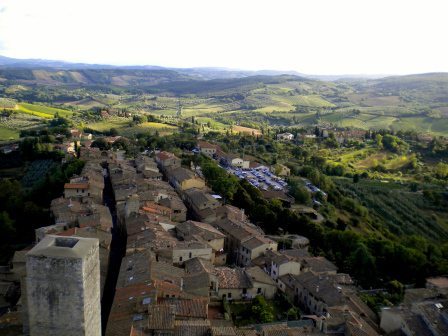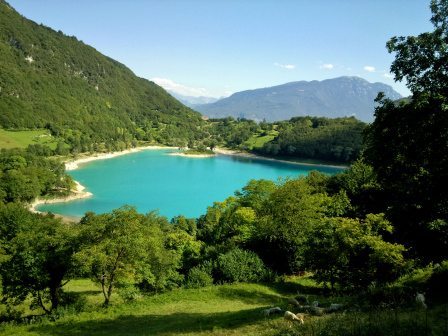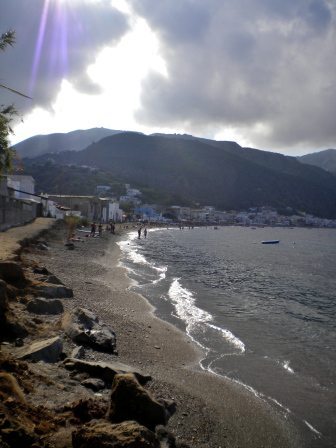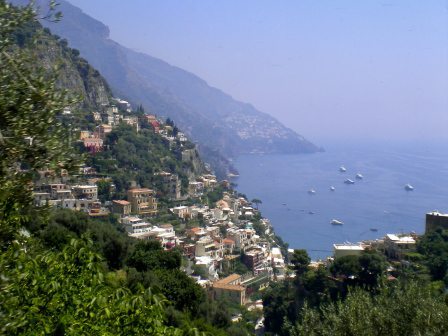Exploring off the beaten tracks in Italy
La Bella Italia. How is it that every year, thousands of tourists visit a country with 9,226 km of coastline, mountainous regions that make up just under 40% of its territory and a stunning selection of lakes, not to mention countless traditional towns and villages, and yet they spend a good proportion of their time stood in the queue for the Uffizi Gallery or traipsing around the Vatican?
Let me clarify: I love Rome. Venice’s canals harbour an eerie beauty that cannot be missed, even if it does require adding to the swarms of tourists that are grinding it down into the sea. The view from Piazzale Michelangelo out over Florence and its unique Duomo is more than worth the hike. Pompeii… well, the two thousand year old brothel is amusing, but other than that I would personally say it can be missed, unless you have a particular interest in dust and rocks.
It’s just that there is so much more to the home of pizza, pasta and Da Vinci than pizza, pasta and Da Vinci. A few years ago I inter-railed around Italy, which by definition means I city-hopped, as it was quite difficult to get anywhere unless it has a train station. My travels since then have revealed to me that this was no more of an effective way to see the best of Italy than city-hopping around England (London, and then, err, Coventry?!). As un-environmentally friendly as it is, sometimes the only way to really explore a country is by car.
So here are my top 5 slightly less conspicuous Italian gems that should be appreciated, if not instead of Rome, Venice, Florence and Pompeii, then at least alongside them.
1. The Italian Alps
Living in the shadow of its counterparts in France, Switzerland and Austria, most people only ever end up in the Italian Alps for a slightly cheaper ski holiday. Yet although you might not find the traditional Swiss chalet or yodelling goatherds wandering its valleys, the region has its own distinct personality, especially during the summer.
When I visited I was staying in a tiny village called Pradibondo, which I suppose only counts as the pre-Alps, but it already struck me as different from the French pre-Alps, for example. The village was a delightful hybrid combination of Alpine terrain with the square, terracotta coloured houses so typical of the rest of Italy. In contrast with the savage rocky heights of the central Alps, the area around Pradibondo has a soft and leafy feel to it.
Added to this is a much more intense sense of community and tradition: away from the ski-lifts and scouring tourism, Pradibondo is still nonchalantly unaware of its own rare twee charm as it hosts open-air brass band concerts and invites its inhabitants to share a great steaming vat of polenta.
A little to the south is the peculiar Lago di Tenno, not far from the northernmost point of Lake Garda. Beautifully round and of a shocking turquoise colour, it sits like a tiny jewel amidst the foothills of the Alps and their sweeping carpet of trees.
2. The Aeolian Islands
Venturing out into the Tyrrhenian Sea, just above Sicily, is the sprinkling of volcanic islands known as the Aeolian archipelago, an area which is no stranger to tourism but nonetheless much less crowded (and less expensive) than any of the beaches around Naples. In fact, when I visited the largest island, Lipari, my friend and I stayed in our own flat complete with a well-equipped kitchen and garden, a three minute walk from the beach, for just 15€ each a night. On top of this, the beach was almost deserted, despite it being the high season, and we hired sun-loungers for 7€ for the day.
A UNESCO world heritage site, the island also provided some lovely paths up the hillside, from where we could view the entire blueish-grey crescent of the bay and the rugged volcano peaks beyond.
The locals are incredibly friendly if a little on the eccentric side – at the ferry port, it took me a while to realise that the slightly drunk-looking man with mad curly hair holding a sign for ‘Anna Bach’ was actually referring to me, and was supposed to drive me across the island; when I did realise, I was petrified.
The Aeolian Islands hint at Sicilian culture without being a dive into the lion’s den, as they are a world away from the hectic traffic and high crime rate so notorious of mainland Sicily.
3. Tuscan villages
Okay, so the Tuscan countryside is no secret – but only as viewed from one of Siena’s many hilltops or perhaps the window of a train. While I am a big advocate of taking time out of a trip to Florence in order to wander Siena’s alleyways, chill on its bizarrely sloping Piazza del Campo and take in its breathtaking Duomo (one of the best of its kind and easily a match for Florence’s), it is also worth considering hiring a car and escaping to the thick of it, where cobblestoned villages crested by miniature disused castles are in gobsmacking abundance.
One of the most tourist-friendly options is San Gemignano, characterised by its clustering of towers rising violently out of the gentle countryside like a Tuscan New York. Centuries ago it became a fad in the town to construct a tower taller than your neighbour’s, so the buildings kept on growing, like giant stalagmites.
4. The Amalfi Coast
Although Amalfi is no hidden gem – the cramped rocky beach was swarming with tourists when I visited – it always strikes me how many people travel to Naples, Sorrento or Pompeii and yet have no idea Amalfi exists. Perhaps this is down to its capacity as a beach holiday destination, which is minimal, given that accommodation is sparse and the beaches are tiny.
What makes the Amalfi Coast worth a visit (if maybe not a whole holiday) is the bus journey along the coastline: tiny white villages clinging onto breathtaking cliffs, pristine glittering waters lapping at their feet and merging with the sky, the bays speckled here and there with grazing boats. Only here do you lose several metres of altitude popping round to see your neighbour. If you take the bus from Sorrento, sit on the right-hand side and you will find yourself glued to the window in utter awe at the postcard-perfect views (either that or with your head in a paper bag due to the jolty twists and turns).
5. Palermo
Palermo, rather than being inconspicuous, is simply underrated. It doesn’t get the publicity it should because Italians outside of Sicily tend to be quite critical of it. But it’s a lot of fun. A juicy mix of the various architectural influences it has received from invading cultures – most notably a strange Byzantine twist to many of its buildings, giving it a slightly Eastern-Mediterranean feel, intensified by a healthy dose of palm trees – it is a delight to wander, with beautiful gothic and baroque churches, theatres and fountains on every corner (literally, if you take a look at I Quattro Canti).
Its streets are often overflowing with colourful food markets and bars spilling out onto the cobblestones, which all transforms into a vibrant nightlife come sunset.
Palermo doesn’t have much in the way of specific sights (other than some morbidly fascinating Capuchin Catacombs with a vast array of mummified corpses), but it is exciting, fast-paced and real. A short wander off the beaten track and you’ll find noticeably poorer quarters with tattered houses and children playing in dusty streets, a reminder that like any other Western European country Italy is not universally wealthy.
When visiting Palermo, you can rest assured your money is coming into a community that needs it, rather than bombarding a city like Venice, weary from the millions of footsteps that are eroding its beautiful but ageing facade.





Comments